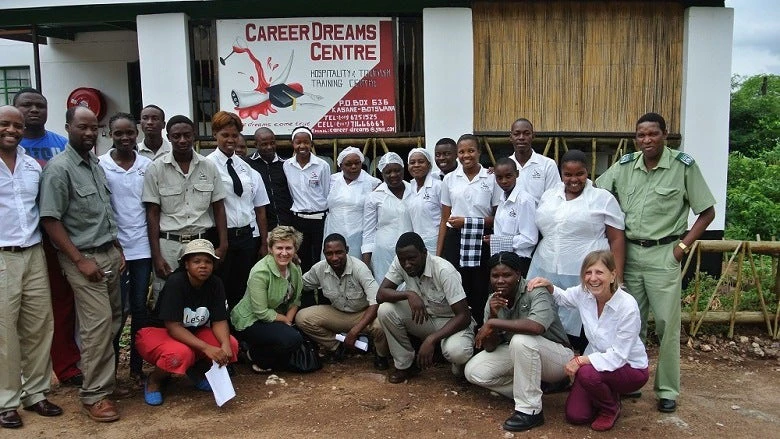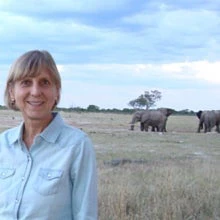
On March 3 rd we will celebrate World Wildlife Day. Adopted by the UN General Assembly in 2013, this day raises awareness of the world’s wild fauna and flora. This year’s theme, "The future of wildlife is in our hands" resonates with those who understand the impact of species loss on the health of ecosystems and human survival.
We are currently in the midst of the sixth, man-made mass extinction of plants and animals. Experts estimate the current loss of species to be between 1,000 and 10,000 times higher than the natural extinction rate. The global Living Planet Index (LPI) shows an overall species decline of 52% between 1970 and 2010. Our increasing demands on nature are driving the two biggest catastrophic threats to species decline- habitat loss and wildlife trade. Habitat loss is a threat to 85% of all species. Exploitation (including poaching and wildlife trade) is the most immediate threat to wildlife populations worldwide.
Illicit trafficking in wildlife is a multifaceted global threat . The problem is particularly acute in Africa, where poaching is leading some charismatic species to the brink of extinction. For example, in 2011 the International Union for Conservation of Nature ( IUCN) declared the Western black rhino extinct, largely due to poaching. The Convention on International Trade in Endangered Species of Wild Fauna and Flora ( CITES) Monitoring the Illegal Killing of Elephants (MIKE) program estimated that in the last 5 years, between 22,000 to 25,000 elephants were poached per year across Africa.
The value of illegal trade has been estimated to be between $5 and $20 billion per year. These estimates suggest that wildlife crime is the fourth most lucrative type of transnational crime. So, organized crime syndicates are reaping benefits as iconic species go extinct. Additionally, communities that live around these protected areas suffer the loss of natural capital through loss of livelihoods. A World Bank study found that crime affecting natural resources and the environment could inflict damage on developing countries worth more than US$70 billion a year ( World Bank 2014). In addition, corruption is often an integral component of illicit trafficking of wildlife, throughout the supply chain. To address this crisis, a multi-focus, well-integrated program is essential.
The Global Environmental Facility (GEF) in June 2015 approved a $91 million grant program called “ The Global Partnership on Wildlife Conservation and Crime Prevention for Sustainable Development” also known as the Global Wildlife Program (GWP). The program is led by the World Bank Group in collaboration with Global Environment Facility (GEF), United Nations Development Program ( UNDP), United Nations Environmental Program ( UNEP), Asian Development Bank ( ADB), International Union for Conservation of Nature (IUCN) and World Wildlife Fund ( WWF).
The Global Wildlife Program’s geographical focus is on Asia and Africa, where wildlife crime is particularly rampant, and the need to conserve wildlife is urgent. The first set of GWP countries includes Botswana, Cameroon, Ethiopia, Republic of Congo, Gabon, India, Indonesia, Mozambique, Tanzania, and Zambia. National projects are currently being prepared to address major threats to wildlife. They will integrate interventions across policy and legislation, law enforcement, protected areas management, sustainable use and alternative livelihoods, and communications. .
The GWP aims to see species populations stabilize and eventually thrive. However, we cannot preserve wildlife without recognizing the important role communities have in conservation. Some communities that live near wildlife reserves enjoy economic benefits from sustainable tourism while others suffer when elephants raid farmer crops or when instances of livestock predation occur. This is why the GWP aims to increase community engagement to live with, manage, and benefit from wildlife.
In addition to promoting sustainable development, a diverse set of approaches will be incorporated at different sites to reduce poaching and illegal trafficking in wildlife. These include strengthening law enforcement agencies, building capacity for enforcement and judicial officers managing protected areas more effectively, and enhancing efforts to fight corruption. The program will also develop systems and mechanisms to promote knowledge exchanges between country projects and technical experts to share lessons learned across countries.
On January 18, 2016, my team led the first GWP knowledge exchange meeting with GWP national country representatives. More than 40 global conservation practitioners and technical experts attended. We discussed the GWP, shared knowledge on key poaching and trafficking issues, and collaborated with program stakeholders. This initial activity was designed to support national government project preparation efforts and will be followed by additional in-person and virtual knowledge events. Curbing the scale and rate of poaching and wildlife trafficking is a big task. However, the enthusiastic exchanges at the meeting left us all energized and determined to deliver on the GWP’s vision.
There’s a lot of work to do. But in the meantime, join us in celebrating the World Wildlife Day and help raise awareness on threats to wildlife so that we can help elephants, rhinos, and big cat populations thrive.


Join the Conversation